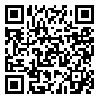BibTeX | RIS | EndNote | Medlars | ProCite | Reference Manager | RefWorks
Send citation to:
URL: http://jdisabilstud.org/article-1-3159-en.html
2- Associate Professor, Department of Psychology, Tonekabon Branch, Islamic Azad University, Tonakabon, Iran & Associate Professor, Department of Psychology, Science and Arts University, Yazd, Iran
3- Associate Professor, Department of Psychology, Tonekabon Branch, Islamic Azad University, Tonakabon, Iran & Associate Professor, Department of Psychology, University of Tehran, Tehran, Iran
Abstract
Background & Objectives: Attention–deficit/hyperactivity disorder (ADHD) is one of the most common psychiatric disorders in children. Impulsivity is the tendency to act on impulse and engage in behavior characterized by little thought, reflection, or consideration of the consequences of the behavior. High levels of impulsivity have been reported in ADHD. Unfortunately, various pharmaceutical and non–pharmacological treatments used in ADHD have not been able to eliminate the problems of children with ADHD and their families. On the other hand, the high prevalence of children with ADHD and their many impulsive behaviors can cause many problems in their academic and professional lives. Also, the effectiveness of play therapy combined with drug control on impulsive behaviors in ADHD has been studied very little. Therefore, in this study, the effectiveness of Geldard group play therapy, along with drug control, on the impulsivity of children with ADHD was investigated.
Methods: This study was quasi–experimental with a pretest–posttest design with a control group. Among children aged 6 to 9 years with symptoms of ADHD referred to psychiatric clinics in Yazd City, Iran, 30 eligible volunteers were included in the study in a simple random manner. Then, 15 were randomly assigned to the intervention group and 15 in the control group. The inclusion criteria were as follows: having ADHD approved by a psychiatrist; age range from 6 to 9 years; not using other treatment methods such as behavioral therapy; using medication other than Ritalin. All children took Ritalin medicine in 5 mg orally twice a day. The therapeutic protocol used in this study for each patient was eight 90–minute group play therapy sessions performed only for the intervention group. The impulsivity variable scores were compared using the Barratt Impulsiveness Scale–11 (BIS–11) (Patton et al., 1995) before and after play therapy. Data analysis was done using covariance analysis in SPSS version 17. The significance level of the tests was set at 0.05.
Result: The results showed that the impulsivity in children with ADHD in the intervention group and after receiving treatment decreased significantly compared to the control group (p<0.001). The results related to the effect size also indicated that 61% of the difference between the intervention group and the control group in the impulsivity component was due to the implementation of group play therapy.
Conclusion: The results of the present study showed that Geldard group play therapy combined with drug control has a significant effect on the impulsivity of children with ADHD and can lead to the improvement of impulsivity in these patients.
| Rights and permissions | |
 |
This work is licensed under a Creative Commons Attribution-NonCommercial 4.0 International License. |



